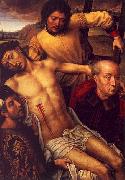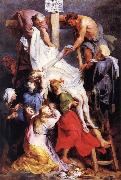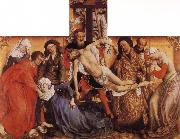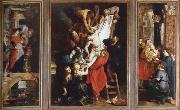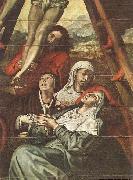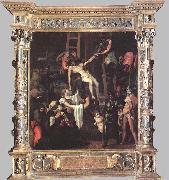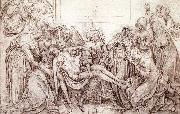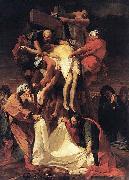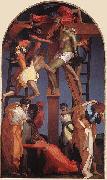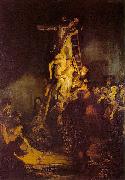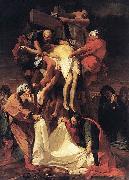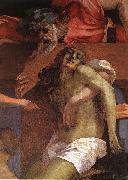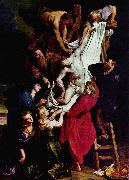El Petróleo al por mayor de China que no Pinta Mínimo |
|
|||||||||||||||||||
|
|
|||||||||||||||||||
|
1480-90 Capilla Real, Granada 1480/90 Capilla Real, Granada |
|||||||||||||||||||
|
|
|||||||||||||||||||
|
|
|||||||||||||||||||
|
|
1616-17 Petróleo en la lona, 425 X 295 cm 1616-17 Oil on canvas, 425 x 295 cm |
||||||||||||||||||
|
|
|||||||||||||||||||
|
|
|||||||||||||||||||
|
|
la Témpera mk86 c.1435-1440 en la madera220x262cm Madrid, del de Museo Prado mk86 c.1435-1440 Tempera on wood 220x262cm Madrid,Museo del Prado |
||||||||||||||||||
|
|
|||||||||||||||||||
|
|
|||||||||||||||||||
|
|
la Lona mk150 c.1730/31 398x223cm mk150 c.1730/31 Canvas 398x223cm |
||||||||||||||||||
|
|
|||||||||||||||||||
|
|
|||||||||||||||||||
|
|
mk156 1610-11 Engrasan en la lona 460x340cm mk156 1610-11 Oil on canvas 460x340cm |
||||||||||||||||||
|
|
|||||||||||||||||||
|
|
|||||||||||||||||||
|
| mk247 1611 to 14 oil on wood 165x182 in,421x464 cm,cathedral of our lady,antwerp,belgium | ||||||||||||||||||
|
|
|||||||||||||||||||
|
|
|||||||||||||||||||
|
| 320 x 191 cm (entire painting) Cathedral, Seville In Seville, the second third of the sixteenth century also witnessed the introduction of a style of painting that reflected the ascendancy of Raphael. In this center, the most important artist of the period were undoubtedly of Northern origin: the Dutchman Fernando Esturmio (Storm), and the Fleming Pedro de Campa?a (Kempeneer). The latter, the more gifted of the two, was born in Brussels in 1503. He was trained in Italy, but in 1537 he is known to have been employed in the Cathedral of Seville. Shortly before 1563 he returned to his native country. The style of this master includes elements derived from Michelangelo, but these are offset by original plastic qualities and a sense of drama. One of Campa?a's key works is the Descent from the Cross (1547) in Seville cathedral, a painting that anticipates the Baroque of Rubens and was much admired by other Spanish artists, particularly Murillo. Campa?a had a more amiable and genuinely Raphaelesque side, evident in the altarpiece of the Marshal's Chapel in Seville cathedral, which he was commissioned to paint in 1555. His progress toward the Baroque and his interest in the rendering of light are revealed in his admirable Adoration of the Magi, which was painted in 1557 | ||||||||||||||||||
|
|
|||||||||||||||||||
|
|
|||||||||||||||||||
|
| 141 x 128 cm (incl. frame) Museo del Prado, Madrid Machuca was an extraordinary artist, an architect, sculptor and painter. He built the palace of Charles V in Granada, a work of exceptional quality, one of the very few existing Renaissance buildings with a circular court. His training as an architect is evident in the design of the original ornamented frame of this painting with plenty of decorative elements typical of the architecture of first Spanish Renaissance or Plateresque style. It is indicated on this frame that the altarpiece was ordered by Do?a In?s de Castillo, and it was finished in 1547 | ||||||||||||||||||
|
|
|||||||||||||||||||
|
|
|||||||||||||||||||
|
| 1460 Pen over chalk drawing on paper, 240 x 357 mm Mus?e du Louvre, Paris Paintings in the style of Rogier van der Weyden that are no longer extant are also recorded in several drawings not from the workshop of the Brussels town painter. Among the most notable is this Descent from the Cross, frequently said to derive from an original by Rogier himself, and sometimes even ascribed to Robert Campin. Surrounded by Christ's mourning friends, Joseph of Arimathea and Nicodemus are carrying the body just taken down from the Cross to the tomb. The very unusual outer area, with raised sections at the sides where angels hover with the nails and the crown of thorns, may refer to the place where the painting connected with this drawing was installed - perhaps it was to be placed below a tall window. The composition obviously appealed to contemporary taste, and was copied in painting and sculpture several times. It shares important elements with Rogier's most influential work, the Deposition (Prado, Madrid): there are considerable similarities in the construction of the scene, which again is transferred to an altar shrine, and in some of the figures, particularly those of the bearded Joseph of Arimathea and Mary Magdalene. The Virgin Mary and the flying angels, on the other hand, are more like the corresponding figures in the Crucifixion Triptych (Kunsthistorisches Museum, Vienna), and the figure of St John resembles his counterpart in the Seven Sacraments Altarpiece (Museum of Fine Arts, Antwerp). However, while in a work like the St Columba Altarpiece (Alte Pinakothek, Munich) the figures, taken from various different pre-existing models, are merged into a meaningful whole, there are discrepancies in the Descent from the Cross. Joseph of Arimathea seems to be standing still as he holds the corpse, but the legs of Nicodemus suggest that he is walking away, an action that clashes with the Virgin's heartfelt embrace of Christ. And the Magdalene is obviously shown twice, as the woman with the vessel of ointment - the saint's attribute - standing on the extreme right, veiled as in the Crucifixion Triptych, and as the figure of the Magdalene from the Deposition, identifiable as the former sinner by her low-cut, expensive dress. These inconsistencies cannot be reconciled with Rogier's careful, confident style, and the drawing cannot therefore be considered a copy from a work conceived by him. In fact it is not yet clear whether it is a copy at all, or whether it may be a sketch for a design.Artist:WEYDEN, Rogier van der Title: Descent from the Cross Painted in 1401-1450 , Flemish - - graphics : study | ||||||||||||||||||
|
|
|||||||||||||||||||
|
|
|||||||||||||||||||
|
| 1612-14 Oil on panel, 421 x 153 cm O.-L. Vrouwekathedraal, Antwerp The outsides of the wings are devoted to St Christopher. According to his medieval legend, the huge St Christopher carried the Christ Child across a river on his shoulders. A hermit on the right lights his way with a lantern. , Artist: RUBENS, Pieter Pauwel , Descent from the Cross (outside left) , 1601-1650 , Flemish , painting , religious | ||||||||||||||||||
|
|
|||||||||||||||||||
|
|
|||||||||||||||||||
|
| 1612-14 Oil on panel, 421 x 153 cm O.-L. Vrouwekathedraal, Antwerp The right wing of the great triptych of the Descent from the Cross is devoted to the presentation of the Infant Christ in the Temple at Jerusalem. The elderly Simeon holds the Child in his arms while the prophetess Anna, located in the shadows between Simeon and Mary, looks on joyfully. Joseph, who has brought two sacrificial doves with him, kneels down respectfully. The onlooker on the left edge of this splendid temple interior is Nicolaas Rockox, a friend of Rubens and a prominent figure in Antwerp. , Artist: RUBENS, Pieter Pauwel , Descent from the Cross (right wing) , 1601-1650 , Flemish , painting , religious | ||||||||||||||||||
|
|
|||||||||||||||||||
|
|
|||||||||||||||||||
|
| 1612-14 Oil on panel, 421 x 153 cm O.-L. Vrouwekathedraal, Antwerp The outsides of the wings are devoted to St Christopher. According to his medieval legend, the huge St Christopher carried the Christ Child across a river on his shoulders. A hermit on the right lights his way with a lantern. , Artist: RUBENS, Pieter Pauwel , Descent from the Cross (outside right) , 1601-1650 , Flemish , painting , religious | ||||||||||||||||||
|
|
|||||||||||||||||||
|
|
|||||||||||||||||||
|
| Date 1697(1697) Medium Oil on canvas Dimensions 424 x 312 cm (166.9 x 122.8 in) cjr | ||||||||||||||||||
|
|
|||||||||||||||||||
|
|
|||||||||||||||||||
|
| 1521(1521) Medium Oil on wood Dimensions Height: 375 cm (147.6 in). Width: 196 cm (77.2 in). cjr | ||||||||||||||||||
|
|
|||||||||||||||||||
|
|
|||||||||||||||||||
|
| 1634 Oil on canvas 62 x 46 in. (158 x 117 cm) cjr | ||||||||||||||||||
|
|
|||||||||||||||||||
|
|
|||||||||||||||||||
|
| 1697(1697) Medium oil on canvas Dimensions 424 x 312 cm (166.9 x 122.8 in) cyf | ||||||||||||||||||
|
|
|||||||||||||||||||
|
|
|||||||||||||||||||
|
| 1521(1521) Medium oil on panel cyf | ||||||||||||||||||
|
|
|||||||||||||||||||
|
|
|||||||||||||||||||
|
| 1612-1614 Type Oil on panel Dimensions 420.5 cm x 320 cm cyf | ||||||||||||||||||
|
|
|||||||||||||||||||
|
Peter Paul Rubens
Flemish Baroque Era Painter, 1577-1640 Descent from the Cross 1612-1614 Type Oil on panel Dimensions 420.5 cm x 320 cm cyf |
|||||||||||||||||||
|
Related Paintings to Peter Paul Rubens :. |
|||||||||||||||||||
|
|
|||||||||||||||||||
|
|
|||||||||||||||||||
|
CONTACTE EEUU |







